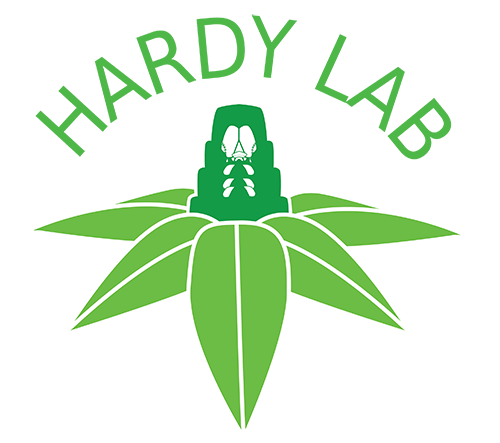Valid Names Results
Nidularia balachowskii Bodenheimer, 1941 (Kermesidae: Nidularia)Nomenclatural History
- Nidularia balachowskii Bodenheimer 1941: 78-80. Type data: TURKEY: Mardin/Diyarbakir, on Quercus sp., 13/02/1939, F.S. Bodenheimer. Syntypes, female, Type depository: Bet Dagan: Department of Entomology, The Volcani Center, Israel; accepted valid name Illustr.
Common Names
Ecological Associates
Hosts:
Families: 1 | Genera: 1
- Fagaceae
- Quercus | Bodenh1941
- Quercus ithaburensis | BenDov2012 SpodekBeMe2014
Geographic Distribution
Countries: 3
- Iran | Bodenh1941
- Israel | BenDov2012 SpodekBeMe2014
- Turkey | Bodenh1941 | UlgentErYa2022
Keys
- SpodekBe2014: pp.7 ( Adult (F) ) [Key to the adult females of Kermesidae species of Israel]
- SpodekBe2014: pp.7-8 ( Adult (F) ) [Key to the third-instar females of Kermesidae species of Israel]
- SpodekBe2014: pp.8 ( Second instar (F) ) [Key to the second-instar females of Kermesidae species of Israel]
- SpodekBe2014: pp.8 ( First instar ) [Key to the first-instar nymphs of Kermesidae species of Israel]
- SpodekBe2014: pp.8 ( Adult (F) ) [Key to the post-reproductive females of Kermesidae species of Israel]
- SpodekBe2014: pp.8-9 ( Adult (M) ) [Key to the adult males of Kermesidae species in Israel]
- SpodekBe2014: pp.9 ( Second instar (M) ) [Key to the second-instar males of Kermesidae in Israel]
- SpodekBeGh2012: pp.41 ( First instar ) [Key to first-instar nymphs of Nidularia species]
Remarks
- Systematics: Lectotype female (ICVI), and paralectotype female (MNHN), designated in Spodek, et al., from Turkey, 21 km at road from Mardin to Diyarbakir, on branches and twigs of Quercus sp. (Fagaceae), 2/13/1939, F.S. Bodenheimer. Bodenheimer (1941) did not select a holotype, and they regard the above-mentioned specimens as the original material studied by him as indicated on the slide labels. Bytinski-Salz and Sternlicht (1967) listed this species on Q. ithaburensis, however they classified it erroneously under the Pseudococcidae. Spodek et al. (2012b) confirm family placement of this species in Kermesidae by morphological and molecular analyses. (Spodek, et al., 2014)
- Structure: Adult female is oval, highly convex. No trace of an ovisac has been found, but it is probable that the species does form one (Bodenheimer, 1941). Young, pre-reproductive adult female dorsum brownish and venter yellowish white; oval, soft and flat; 1.2-1.9 mm long and 0.6-0.9 mm wide. Dorsal surface covered with 5 longitudinal rows of rectangular wax plates, each plate about 0.25 mm long and 0.3 mm wide; median row with 11 plates, lateral row on each side of median row with 9-11 plates and marginal rows with 7-9 plates. The wax plates become gradually smaller in size towards anterior and posterior apices and lateral margin. Post-reproductive female oval, moderately convex and sclerotized; 2.75-3.75 mm long, 2-3 mm wide and 0.8-1.8 mm high; 5 longitudinal rows of dark brown wax plates almost fused; with lighter brown wax in between rows of plates. (Spodek, et al., 2012) First-instar nymph yellow-greyish, oval and tapering posteriorly 0.38-0.43 mm long and 0.2-0.3 mm wide. (Spodek, et al., 2012) The adult female does not produce a nestlike ovisac like those in N. pulvinata (Koteja 1980) and N. japonica (Kuwana 1918; Liu et al. 1997) but oviposits into a single brood chamber beneath its venter. (Spodek, et al., 2016)
- Biology: There appears to be only one generation per year (Bodenheimer, 1941). Gravid females were observed on branches and trunks of trees throughout March, during which time they oviposited 200 to 250 (range from 10 specimens) whitish eggs. Each egg was about 0.4 mm long and 0.2 mm wide. Once all of the eggs have been laid and the brood chamber full of eggs, the female dies and the dorsum becomes sclerotized. The sclerotized, convex body of the dead, post-reproductive female may remain on the host tree for a year or more after first-instar emergence. Eclosion of first-instar nymphs occurs inside the brood chamber and nymphs emerge from the cavity under the dead female body. This takes place from end of March and throughout April. Crawlers settle in bark crevices on branches and on the trunks of the trees. Young teneral females are found on the branches from June to February. The females continue feeding and increase in body size throughout this period. By late February, the dorsum of the female begins to expand greatly, increasing in convexity and sclerotization. The ventral surface of the abdomen becomes concave, forming the brood chamber into which the eggs are deposited. The ovipositing female secretes a woolly, white wax that surrounds its body margin. (Spodek, et al., 2012)
- General Remarks: Description and illustration by Bodenheimer (1941). Detailed redescription, illustration and photograph in Spodek, et al., 2012,
Illustrations
Citations
- BenDov2012: catalog, distribution, host, 33
- BenDovHa1986: distribution, host, taxonomy, 31
- Bodenh1941: description, distribution, host, illustration, life history, 78-80
- Bodenh1944b: distribution, taxonomy, 92, 99
- Bodenh1953a: description, distribution, host, 133-134, 159
- BullinKo1985: taxonomy, 12
- BytinsSt1967: distribution, host, 126
- Hoy1963: catalog, distribution, host, 172
- KaydanUlEr2007: catalog, distribution, host, 90-106
- Koteja1980b: taxonomy, 590
- KozarDr1998h: catalog, distribution, host, taxonomy, 414
- KozarWa1985: catalog, distribution, 76
- LiuLiSh1997: taxonomy, 15, 19
- MillerGi2000: catalog, taxonomy, 477
- Moghad2013a: distribution, host, 58
- MoghadWa2024: diagnosis, distribution, host, illustration, 10, 16, 145-146
- SpodekBe2012: distribution, taxonomy, 12
- SpodekBe2014: distribution, host, illustration, structure, taxonomy, 79-93
- SpodekBeGh2012: description, distribution, host, illustration, life history, molecular data, structure, taxonomy, 23-45
- SpodekBeMe2014: distribution, host, life history, taxonomy, 109, 116, 117
- SpodekBePr2012: distribution, 67
- SpodekMeBe2016: distribution, host, illustration, life history, life cycle, phenology, 1433-1446
- UlgentDo2019: distribution, host, 487
- UlgentErYa2022: distribution, host, S121
- UlgentKaKo2013: description, distribution, host, taxonomy, 25


